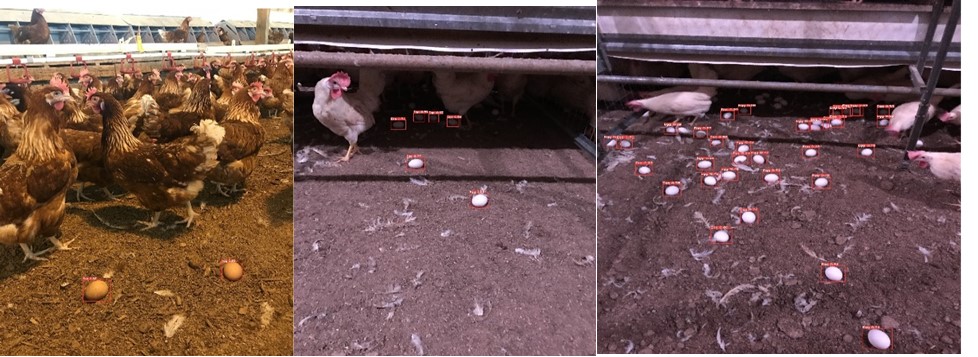-

Bumblefoot (pododermatitis, footpad dermatitis, or foot rot) is the term used to describe a common bacterial infection and chronic inflammatory reaction in a chicken. It is clinically characterized by swelling, abrasion, hyperkeratosis, and ulceration of the digital pad, planta metatarsal region, or both. Bumblefoot compromises the foot’s internal tissues, including the mesoderm, tendons, and bones,…
-

The Poultry Science Extension team at UGA held our 4th annual Georgia Precision Poultry Farming Conference virtually on May 1st, 2024. This year’s conference received about 380 registrations (e.g., poultry farmers, producers, service company managers, researchers, and students) from over 20 countries. We greatly appreciate the wonderful talk from each speaker and the support from…
-

Poultry locomotion is an important indicator of animal health, welfare, and productivity. Traditional methodologies such as manual observation or the use of wearable devices, encounter significant challenges, including potential stress induction and behavioral alteration in animals. For instance, locomotion speed can be used to predict poultry gait score (an indicator of animal walking status) or…
-
UGA poultry science department and Extension team will host the 2024 Georgia Precision Poultry Farming Conference virtually on May 1. The event is free for student participants. The conference will be recorded for sharing with registered participants. Registration link: https://t.uga.edu/7S8 This year’s conference will be the fourth annual Georgia Precision Poultry Farming Conference. Our past three conferences…
-

In the USA, cage-free (CF) housing systems have gained popularity as an ethical and humane poultry farming method. However, the concentration of air pollutants inside CF housing, particularly regarding dust or particulate matter (PM), poses a major concern on animals and their caretakers. These air pollutants can threaten bird health and worker safety. Various studies…
-

Broiler body weight monitoring is critical for evaluating the growth and performance of a flock. The obtained bodyweight and uniformity of the flock are indicators of daily growth rate, feed-to-meat conversion ratio, health conditions, and marketing day prediction. The traditional protocol is to manually sample and weigh a certain ratio of a flock one by…
-

Introduction For commercial broiler production, about 20,000 – 30,000 birds are raised in each confined house, which has caused growing public concerns on animal welfare. Currently, daily evaluation of broiler wellbeing and growth is conducted manually, which is labor intensive and subjective to human errors. Therefore, there is a need for an automatic tool to…
-

Introduction The laying hen industry is shifting from conventional caged to cage-free (CF) housing due to various welfare concerns and public demand to improve poultry behavior and welfare. The CF housing can improve welfare by providing more space and chances to perform natural behaviors, but there are some serious downsides to bird welfare and problematic…
Posted in: Precision animal production -

Introduction The spatial distribution of laying hens in cage-free houses is an indicator of flock’s health and welfare. While larger space allows chickens to perform more natural behaviors such as dustbathing, foraging, and perching in cage-free houses, an inherent challenge is evaluating chickens’ spatial distribution (e.g., real-time birds’ number on perches or in nesting boxes).…
-

Introduction While CF house allows hens to perform more natural behaviors (e.g., dust bathing, perching and foraging on the litter floor), a particular challenge is floor eggs (i.e., mislaid eggs on litter floor). Floor eggs have high chances of contamination. The manual collection of eggs is laborious and time-consuming. Delayed floor egg collection may lead…